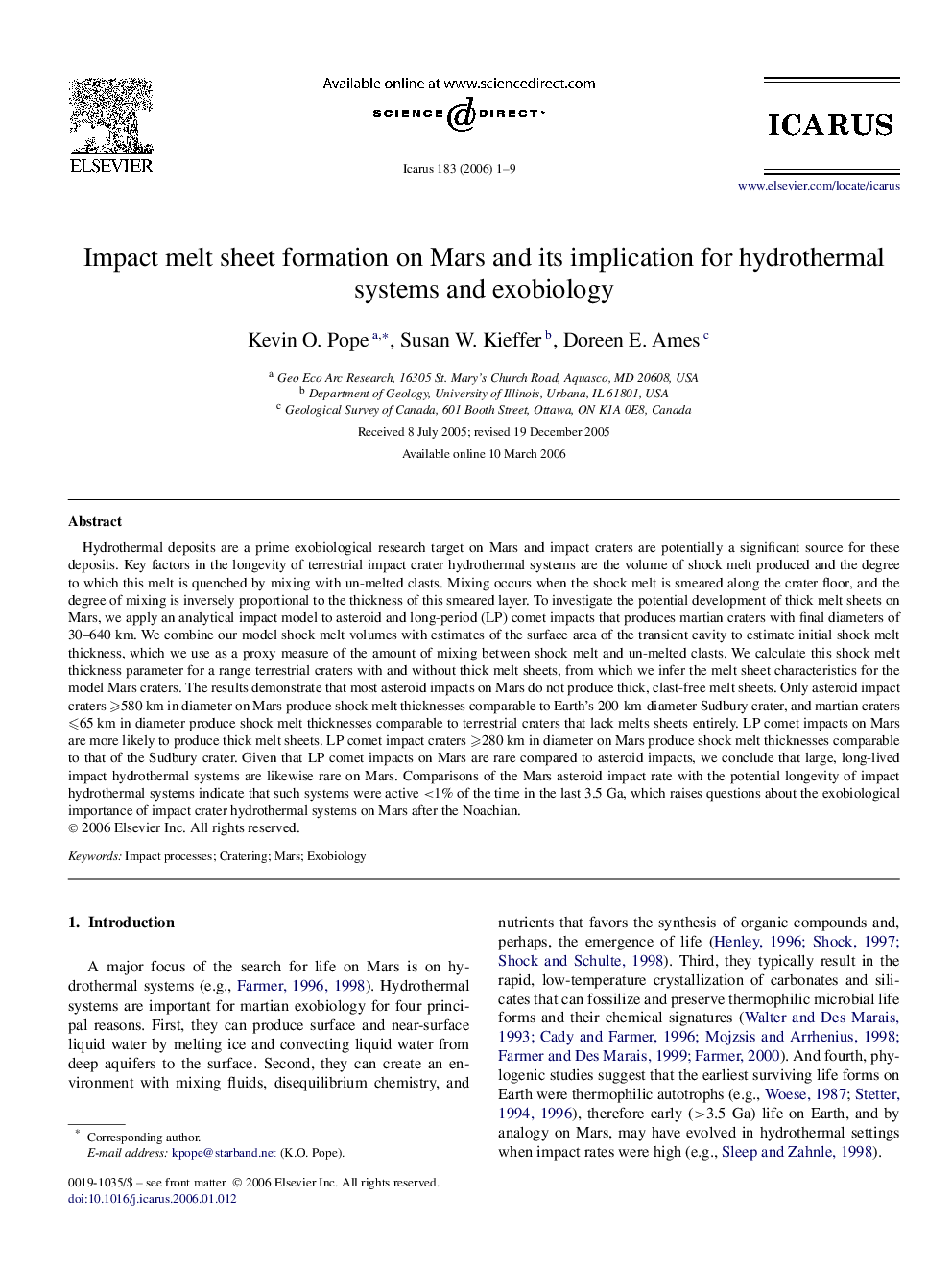| Article ID | Journal | Published Year | Pages | File Type |
|---|---|---|---|---|
| 1776071 | Icarus | 2006 | 9 Pages |
Hydrothermal deposits are a prime exobiological research target on Mars and impact craters are potentially a significant source for these deposits. Key factors in the longevity of terrestrial impact crater hydrothermal systems are the volume of shock melt produced and the degree to which this melt is quenched by mixing with un-melted clasts. Mixing occurs when the shock melt is smeared along the crater floor, and the degree of mixing is inversely proportional to the thickness of this smeared layer. To investigate the potential development of thick melt sheets on Mars, we apply an analytical impact model to asteroid and long-period (LP) comet impacts that produces martian craters with final diameters of 30–640 km. We combine our model shock melt volumes with estimates of the surface area of the transient cavity to estimate initial shock melt thickness, which we use as a proxy measure of the amount of mixing between shock melt and un-melted clasts. We calculate this shock melt thickness parameter for a range terrestrial craters with and without thick melt sheets, from which we infer the melt sheet characteristics for the model Mars craters. The results demonstrate that most asteroid impacts on Mars do not produce thick, clast-free melt sheets. Only asteroid impact craters ⩾580 km⩾580 km in diameter on Mars produce shock melt thicknesses comparable to Earth's 200-km-diameter Sudbury crater, and martian craters ⩽65 km⩽65 km in diameter produce shock melt thicknesses comparable to terrestrial craters that lack melts sheets entirely. LP comet impacts on Mars are more likely to produce thick melt sheets. LP comet impact craters ⩾280 km⩾280 km in diameter on Mars produce shock melt thicknesses comparable to that of the Sudbury crater. Given that LP comet impacts on Mars are rare compared to asteroid impacts, we conclude that large, long-lived impact hydrothermal systems are likewise rare on Mars. Comparisons of the Mars asteroid impact rate with the potential longevity of impact hydrothermal systems indicate that such systems were active <1%<1% of the time in the last 3.5 Ga, which raises questions about the exobiological importance of impact crater hydrothermal systems on Mars after the Noachian.
